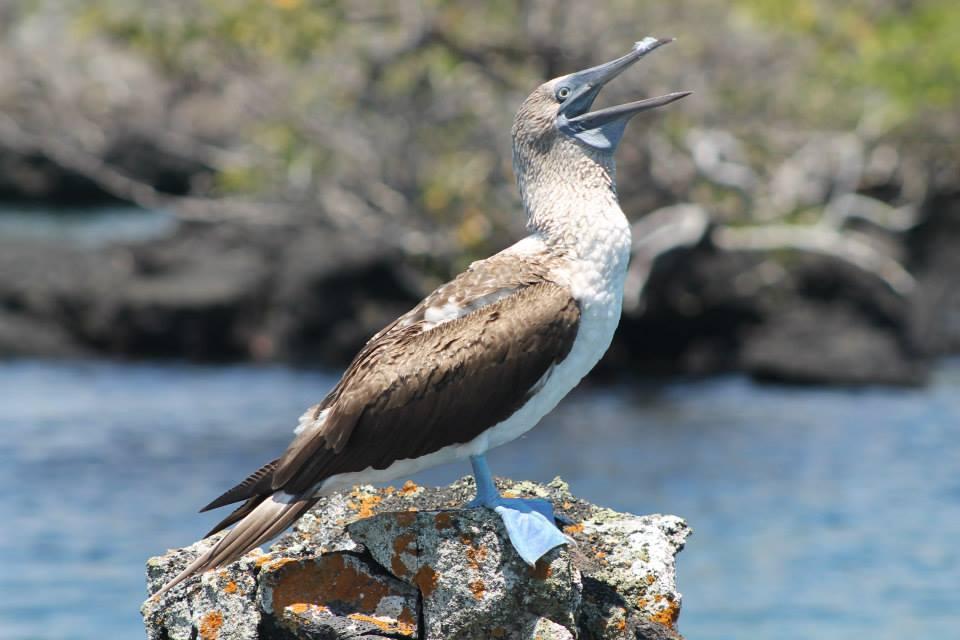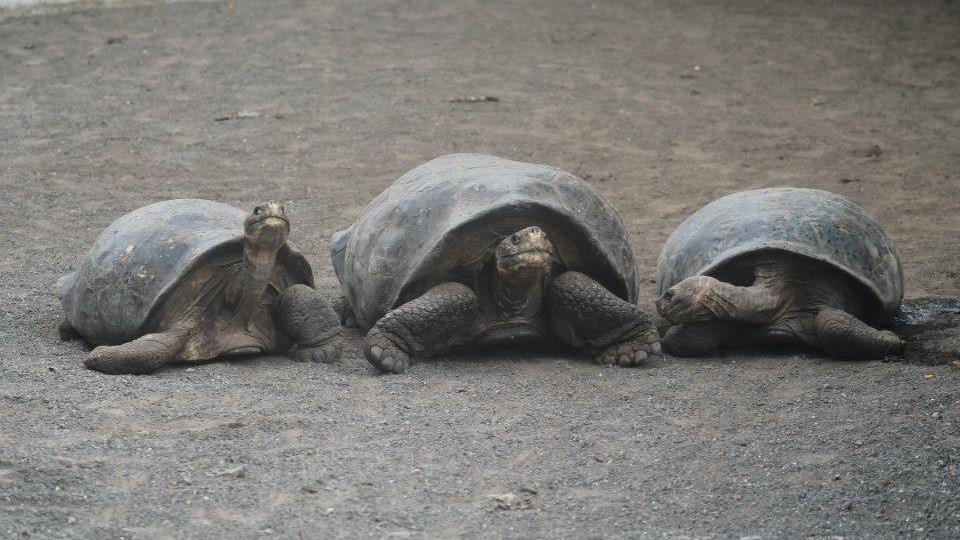Nature has recently been recognized as a subject rather than an object of rights in some Latin American countries. This is the case in Bolivia, on a legal level, and in Ecuador, on a constitutional level. This kind of recognition is relevant because, after decades of juridical, legal, and ethical debates about whether rights should be extended beyond human beings, today it is, at last, a reality. Although discussions about the juridical and moral status of nature, animals, plants, and inanimate aspects of nature are not yet over, this new legal system acknowledges that nature, known as Pachamama in the Quichua and Aimara indigenous languages, has rights.

Photo by María Valeria Berros (Galapagos Islands, 2013)
Photo by María Valeria Berros (Galapagos Islands, 2013)
 This work is licensed under a Creative Commons Attribution-NonCommercial-ShareAlike 4.0 International License.
This work is licensed under a Creative Commons Attribution-NonCommercial-ShareAlike 4.0 International License.
The reforms in Bolivia and Ecuador could be also understood as a regional process that emphasizes the recognition of human, environmental, and indigenous rights. Many countries in the region have recognized these rights in different ways since the late twentieth century. In the case of Ecuador, the seventh chapter of its new constitution is entitled “Rights of Nature.” This document establishes Pachamama as a legal entity for the first time in history, stipulating the right to an integral respect for nature’s existence and for the maintenance and regeneration of its life cycles, structures, functions, evolutionary processes, and restoration. The new constitution was approved in 2008 after a referendum, with nearly 64 percent of votes in its favor. At present, the Ecuadorian constitution is the only one in the world where this kind of recognition exists.
This is the expression of an alternative way of living: the sumak kawsay (in English “good way of living”, in Spanish “buen vivir”), an expression that comes from the Quichua language and demonstrates the important role in these reforms, alongside other actors (e.g., feminist, socialist, and ecological movements), of indigenous peoples. The sumak kawsay is presented as a re-foundation for Ecuador and, in this sense, is included in the constitutional preamble: “We hereby decide to build a new form of public coexistence, in diversity and in harmony with nature, to achieve the good way of living, the sumak kawsay …”
This reform challenges older paradigms of progress and development, and puts the idea of harmony with Pachamama on center stage. Pachamama is no longer seen as a set of natural resources to be exploited or as a chain of natural elements that comprise the environment and must be protected. The debate goes beyond this, and it intends to establish new ways of thought and living with a claim that nature has its own rights.

Photo by María Valeria Berros (Galapagos Islands, 2013)
Photo by María Valeria Berros (Galapagos Islands, 2013)
 This work is licensed under a Creative Commons Attribution-NonCommercial-ShareAlike 4.0 International License.
This work is licensed under a Creative Commons Attribution-NonCommercial-ShareAlike 4.0 International License.
The actual implementation of nature’s rights is now the challenge. Many conflicts have taken place in the last years due to political decisions regarding the protection of Pachamama. The most remarkable one is the Yasuní-ITT Initiative, a creative and innovative way proposed to avoid the exploitation of an oil reserve in the Ecuadorian Amazon. The use of a classic legal tool from contractual law—the trust fund—was proposed. Applying the co-responsibility principle to global ecological problems, the international community was called upon to contribute approximately 3.5 billion US dollars, roughly half of the revenue that the oil reserve would have generated for the country. However, on 26 August 2013, Ecuador decided to end the project due to insufficient and declining contributions. This decision made an important conflict visible, especially with environmental Ecuadorian organizations, as well as the tensions present in a country where constitution protects not only human rights, but also nature’s rights.
Different social actors have started to use these new legal tools, for example argumenting in judicial claims. This opens an important space for research in the juridical field. For instance, it is necessary to reconstruct and analyze the first applications of these new legal tools and to identify new kinds of institutions that will make this recognition real. What are the different fields of knowledge needed to construct the new institutions (such as the Buen Vivir secretary and a planned “nature court” for the Galápagos) stated in the rights of Pachamama? Is it possible to study these topics from a legal perspective or is it necessary to initiate a dialogue with other fields, particularly ancestral and local knowledge?
How to cite
Berros, María Valeria. “The Constitution of the Republic of Ecuador: Pachamama Has Rights.” Environment & Society Portal, Arcadia (2015), no. 11. Rachel Carson Center for Environment and Society. https://doi.org/10.5282/rcc/7131.
ISSN 2199-3408
Environment & Society Portal, Arcadia
 This work is licensed under a Creative Commons Attribution-NonCommercial-ShareAlike 4.0 International License.
This work is licensed under a Creative Commons Attribution-NonCommercial-ShareAlike 4.0 International License.
2015 María Valeria Berros
This refers only to the text and does not include any image rights.
Please click on the images to view their individual rights status.
- Berros, María Valeria. “El estatuto jurídico de la naturaleza en debate (meulen en el mundo del derecho).” Revista de Derecho Ambiental, no. 36 (2013).
- Gargarella, Roberto, and Christian Courtis. El nuevo constitucionalismo latinoamericano: promesas e interrogantes. Santiago, Chile: CEPAL, 2009.
- Gudynas, Eduardo. “Buen Vivir: Today’s Tomorrow.” Development 54, no. 4 (2011): 441. doi:10.1057/dev.2011.86.
- Hermitte, Marie-Angèle. “La nature, sujet de droit?” Annales. Histoire, Sciences Sociales, no. 1 (2011): 173.
- Le Quang, Matthieu, and Tamia Vercoutère. Ecosocialismo y buen vivir: diálogo entre dos alternativas al capitalismo. Quito: IAEN, 2013.
- Stone, Christopher D. “Should Trees Have Standing? Toward Legal Rights for Natural Objects.” Southern California Law Review 45 (January 1, 1972): 450.








